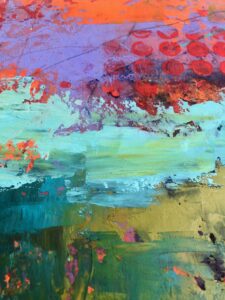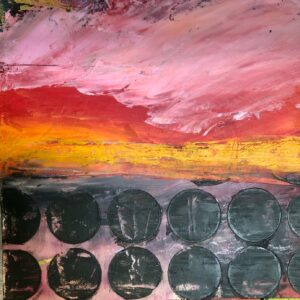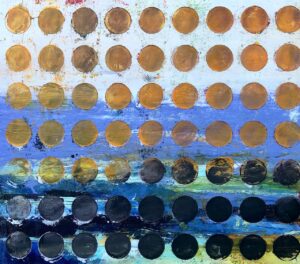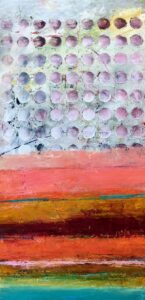
Frenzy might be an overstatement, but I have been spending more time in my studio and after a fairly long hiatus, I have returned to painting with oil and cold wax.
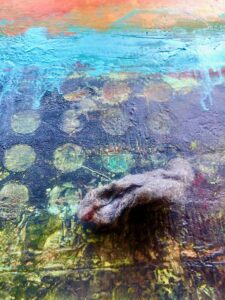
Since 2016, I have taught a four-day Abstracted Landscape class at Sitka for Art and Ecology on the Oregon Coast. Because of the pandemic, this year’s class, which was sold out and scheduled for August 21-24, was canceled (as were all classes at Sitka).
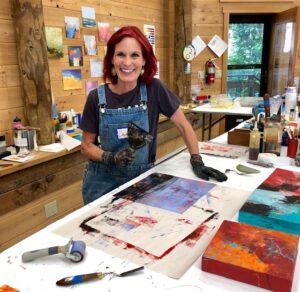
Somehow the idea of not teaching this year inspired me to jump back in to oil and cold wax after several months of painting with acrylics and working on a series of collages. It felt good to crack open the gallon of cold wax and whip up a satisfying mound of wax, begin choosing tubes of oil paint to mix, and dig out my R & F Pigment Sticks.

I had one deadline for a painting (so that was a BIG motivator to get into the studio and do some painting and I’ll share about that project when I can), but otherwise, I decided to pull out old boards that I had used for demos in my Sitka class last year. None of the pieces were completed, they just had fits and starts of paint and marks on them, all used to illustrate techniques and then set aside. It was nice to have something to respond to besides a plain, blank, board.

I also revamped a few boards that had been completed paintings, but something was niggling at me and those pieces got a light sanding to rough up the surface, and then I started over. It was nice to erase an old painting, but know that there was that sense of history lurking below the surface.
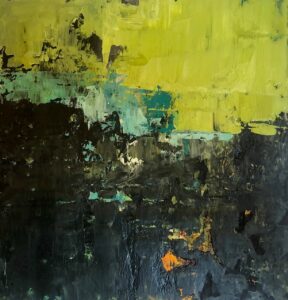
pen·ti·men·to
[ pen-tuh-men-toh ]
noun, plural pen·ti·men·ti [pen-tuh-men-tee] . Painting.
the presence or emergence of earlier images, forms, or strokes that have been changed and painted over.
What has emerged during my extended painting sessions is the reoccurring theme of circles. I have always loved polka dots and circles and they have shown up in my work for years, but lately I have tipped over into obsession.

obsession
[/əbˈseSHən/]
noun
the domination of one’s thoughts or feelings by a persistent idea, image, desire, etc.
I’m using circles to excess and eventually I’ll reign myself in. Or not. In the meantime, here are several pieces in various stages of completion. All are on cradled wood substrates and they all have either Venetian plaster or limestone clay (the fancy name for joint compound) as an under layer. Other than that, some of the paint is from an earlier completed piece, or is from a demo at Sitka. Almost all of these have circles somewhere as a layer – in the plaster, buried in the paint, added on top of the paint, or some of the paint removed using a stencil to reveal paint, the circles serving as a window into an earlier layer.

